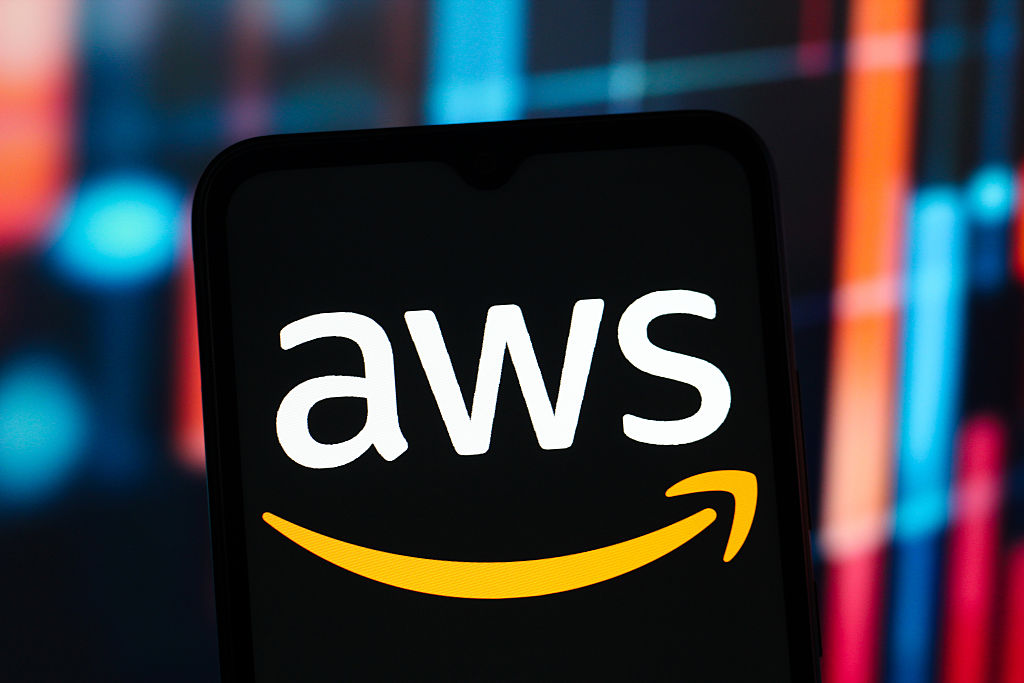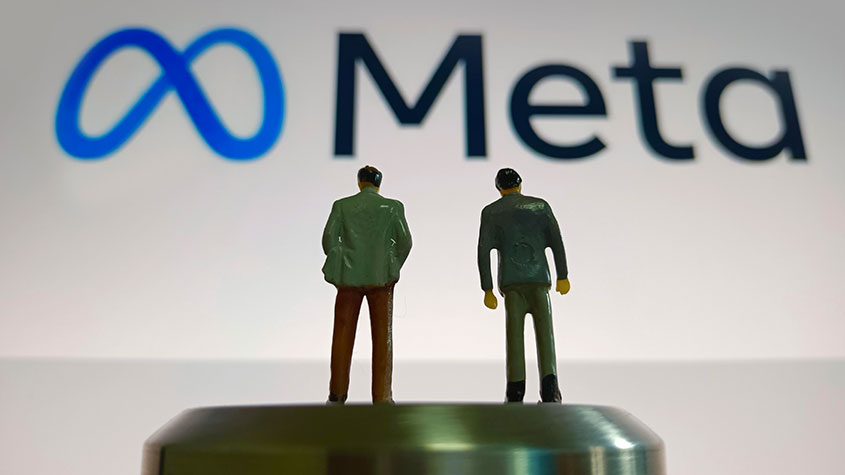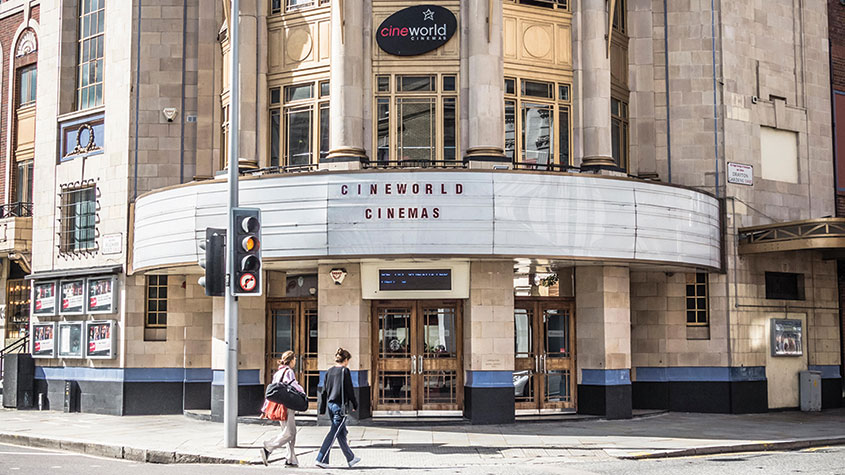Curtain up at Cineworld
Cineworld, the cinema chain, has shrugged off sector weakness and has room to grow, says Matthew Partridge.


Cinema chains have had a rough decade. Audiences have stagnated as people watch fewer films on the large screen and concentrate on television instead. There is constant pressure from studios either to shorten or scrap the 90-day window between a film's cinema release and its launch on streaming services (known as premium video on demand). Some streaming services, such as Amazon and Netflix, are even trying to get studios to skip a cinema release entirely and go straight to TV instead.
Nevertheless, the sector is hardly a write-off. While there has been a modest per-capita decline in the number of people attending cinemas, it is relatively limited, amounting to less than 1% a year per person in the United States. And thanks to more expensive tickets, overall revenue is still growing.
What's more, over the past year studios have backed away from accelerating film launches on premium video on demand after studies suggested this cannibalises rather than enhances revenue. Talk has shifted from eliminating the 90-day window to reducing it to 50 days, a recognition that a film's success on the big screen drives secondary sales.
MoneyWeek
Subscribe to MoneyWeek today and get your first six magazine issues absolutely FREE

Sign up to Money Morning
Don't miss the latest investment and personal finances news, market analysis, plus money-saving tips with our free twice-daily newsletter
Don't miss the latest investment and personal finances news, market analysis, plus money-saving tips with our free twice-daily newsletter
A resilient operator
One cinema chain that has defied the tough backdrop is Cineworld. Its strategy has been to invest in the latest technology, such as the bigger IMAX screens and wall-to-wall Superscreens, on the basis that if you're asking people to pay extra, you should give them something that isn't available at home.
It has also had a lot of success selling monthly memberships that permit unlimited visits, while the Picturehouse chain of cinemas focusing on arthouse and independent productions has diversified its range of films. Cineworld has delivered strong growth, more than doubling revenue between 2013 and 2017 while maintaining strong margins.
Its UK success bodes well for the recent $3.6bn takeover of Regal cinemas, one of the largest chains in the United States. Over the past five years Regal's market share has declined to around 20% (allowing plenty of room for expansion), and experts view its cinemas as outdated. Cinewold has pledged to turn Regal's fortunes around by investing in a refurbishment programme. It will also attempt to increase non-ticket revenue by boosting the amount of food and drink on offer (this currently accounts for a third of sales).
Despite the group's strong revenue growth and explosive share-price performance it trades at only 12.3 times forward earnings. Its 10% return on invested capital shows that it is squeezing value from the money that it puts into the business. Overall, we'd suggest buying Cineworld at its current price of 289p. We'd suggest that you buy it at £12 per 1p, compared with IG's minimum of £1. We'd put the stop loss at 209p, which will give you maximum downside of £960.
How my tips have fared
The slight recovery in the value of the FTSE 350 over the last fortnight has bolstered our long positions,with four out of the six stocks rising.
Greene King went up from 492p to 499p, Redrow rose to 558p from 500p, Shire is now at £45.57, up from £44.86. Next is at £51.96, compared with £50.51.
However, Premier Oil edged down from 109p to 107p, increasing our losses to £437.50, while Saga tumbled to 116p, down from 130p. Overall, Greene King and Shire are making money, while the rest of our long positions are in the red.
The bad news, however, is that while market conditions have boosted our longs, they have generally been bad for our shorts. With the exception of Netflix, which fell from $330 to $315, all the others went up in value.
In some cases, the rises were relatively minor, with bitcoin going up to $6,404 from $6,387, Snap increasing from $6.84 to $6.90, and Weis Markets also rising, from $44 to $44.60.
However, Tesla shot up from $261 to $341 after it shocked everybody by actually making a profit, thanks to income from carbon credits. Just Eat also jumped from 601p to 626p, while Twitter is now at $34.02.
Overall, while the losses on our longs have been reduced to £1,338, the profits on our shorts have shrunk to £1,392. This means our open positions are now just £54 in the black.
At present we have three open positions held for more than six months: Greene King, bitcoin and Tesla.
While we'd generally look to close any old positions that are making a loss, I'm going to give my Tesla short a reprieve although if things don't improve by the end of the year I'm definitely pulling the trigger. I'm also going to reduce the stop loss of bitcoin to $7,500.
Trading techniques: Dr Copper
Traders are always on the lookout for leading indicators that can provide advance warning of a recession and a downturn in the stockmarket. One of the most popular has always been the price of copper or "Dr Copper" as it's sometimes known. Because copper is needed for everything from batteries to the wiring inside houses and cars, if firms expect the economy to expand they will start to buy more copper in anticipation of increases in output. This will push prices higher. During an economic slowdown the process will go into reverse.
There is some evidence that copper consumption and global economic growth are linked.For example, Tom Wise of the Bank of England found a strong correlation between growth in global copper consumption and worldwide economic growth between 1981 and 2016. He also found that between 1999 and 2017 there was generally a strong three-year rolling correlation between metals prices and various measures of world activity.
However, copper's usefulness as a guide to the stockmarket, notably America's, has declined. Both copper and the S&P 500 collapsed in the second half of 2008, before rallying in early 2009. However, between February 2011 and early 2016 copper prices fell by more than half, while the S&P 500 went steadily up by more than 53%. Part of the reason for this is that the biggest consumer of copper is now China, which accounted for nearly half of world consumption in 2017. The decline of American manufacturing means that US copper consumption is only two-thirds of its 1998 level.
Get the latest financial news, insights and expert analysis from our award-winning MoneyWeek team, to help you understand what really matters when it comes to your finances.

-
 Investors will reap long-term rewards from UK equities
Investors will reap long-term rewards from UK equitiesOpinion Nick Train, portfolio manager, Finsbury Growth & Income Trust, highlights three UK equities where he’d put his money
-
 The graphene revolution is progressing slowly but surely
The graphene revolution is progressing slowly but surelyEnthusiasts thought the discovery that graphene, a form of carbon, could be extracted from graphite would change the world. They might've been early, not wrong.
-
 Amazon stock falls as AWS results underwhelm
Amazon stock falls as AWS results underwhelmApple stock rose after earnings on a return to growth in China; Amazon's share price fell despite an earnings beat
-
 What is Jeff Bezos' net worth?
What is Jeff Bezos' net worth?Jeff Bezos' net worth stems from his large holdings in Amazon stock. We look at how he established the world’s biggest e-retailer, his space and media investments, and what’s in store for the James Bond franchise
-
 Is the technology rout over?
Is the technology rout over?Analysis Big tech has reported a bump in revenues leading some to question if the pandemic slump is over
-
 Tech stocks have plunged this year, but is now the time to buy?
Tech stocks have plunged this year, but is now the time to buy?Tips Tech stocks have faced heavy selling pressure this year, although all of these firms have bright futures.
-
 Invest in Brazil as the country gets set for growth
Invest in Brazil as the country gets set for growthCover Story It’s time to invest in Brazil as the economic powerhouse looks set to profit from the two key trends of the next 20 years: the global energy transition and population growth, says James McKeigue.
-
 Curtain falls as Cineworld files for bankruptcy
Curtain falls as Cineworld files for bankruptcyNews Cinema chain Cineworld is filing for bankruptcy in the US, and shareholders are likely to be wiped out. How did it come to this?
-
 Cineworld faces a bleak future – investors should stay away
Cineworld faces a bleak future – investors should stay awayAnalysis Weighed down by crippling debts and with consumers tightening their belts, Cineworld's future does not look bright, says Rupert Hargreaves. Investors should steer well clear.
-
 Why Big Tech’s move into medicine is a mistake
Why Big Tech’s move into medicine is a mistakeOpinion The big tech companies have long wanted a slice of the medical action, and now they are moving in. They are making a big mistake and will fae a huge backlash, says Matthew Lynn.